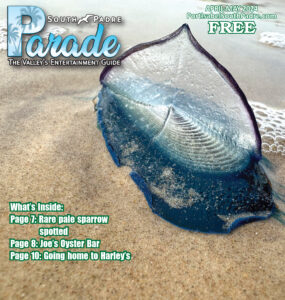By Steve Hathcock
(May 14, 1836, Mexican President, General Antonio Lopez de Santa Anna, signed the Treaties of Velasco which effectively established the Republic of Texas as a sovereign nation. In addition, Santa Anna pledged to withdraw his troops south of the Rio Grande River. However, the treaty was never ratified by the Mexican government and Mexico continued to claim the Nueces River as the boundary. Ten years later, the boundary dispute was about to escalate.)
May 7, 1846: Taylor and his men took up the march in the early evening and made their night camp some seven miles west of Port Isabel. Dawn found the column again on the march. The men made good time. About noon, the advanced guard reported the enemy forces were drawn up in great numbers just ahead.
Further on, the country opened into a broad prairie bounded by Palo Alto, a thick grove of dwarfish trees. It was here the Mexican army had chosen to fight. A division of cavalry, their pennants cracking briskly in the breeze, watched silently as the American force entered the flat plain. Behind the horsemen were the Mexican artillery and a solid column of infantry that stretched over a mile long.
While Taylors men were forming for battle, Lieutenant J.E. Blake of the Topographical Engineers galloped ahead and out onto the prairie to observe the enemy’s lines. He continued on until he was within about 150 yards of them. Dismounting he used his spyglass to do a reconnaissance of the enemy.
Not sure what his intentions were, several of the Mexican officers, who decided he had been sent to negotiate, rode towards Blake with the intention of receiving whatever message he may have been carrying for their commanding officer. Noting the two were approaching from an oblique angle, Blake quickly remounted and proceeded to deliberately ride the entire length of the enemy lines. The American troops cheered. The Mexican Cavalry however, showed no visible reaction too Blake’s daring ride. After all, they would meet him soon enough on the field of battle. We shall see who is so brave when he faces 6000 of his enemy.
Returning to the American lines, Blake gave General Taylor an accurate count of the Mexican force and the number if artillery and cavalry the Americans would soon face.
The space between the two armies was now lessening and details of the opposing side were becoming plainly visible. A space of less than seven hundred separated the two armies when the Mexican artillery opened fire throwing ball and grape shot over the heads of the Americans. Later, General Taylor would recall that first cannonade.
“In quick succession, the whole of their artillery fired causing the earth to tremble and creating a tremendous column of smoke and dust.”
The American artillery returned fire and the battle was on. For over two hours the cannonading continued, a deadly contest with the Mexicans out gunned from the start. Major Ringgold’s command moved about the field, pausing here and there to send painfully accurate bursts of grape amongst the massed might of the Mexican cavalry. Men and horses alike stood no chance under this kind of devastating fire power. A regiment of lancers commanded by General Torrejon, moved towards the right in an attempt to flank our lines, Major Ringgold directed his guns down upon their heads but still, they came on. Captain Walker and about twenty of the rangers was on the right and the 5th continued to throw volley after volley into the advancing lancers until at last they were stopped and then turned back. Confusion reigned among the now disorganized Mexicans and most made to retreat, though a small number continued their attempt to breach our lines, but they too were driven back when Col. Twiggs and the 3rd Infantry cut off their advance.
The cannon fire was so intense that the wiry grasses of the plain now caught fire. Clouds of thick smoke and the stench of spent gun powder seared the nostrils of men and animal alike. The battle had raged for two hours before the Mexican batteries began to slacken until they were silent.
Now the Mexican Army began falling back, hoping to reposition themselves.
The Americans quickly moved their guns forward however and continued their deadly cannonade. The enemy was not defeated yet. Major Ringgold had both legs shot away by a cannon ball that passed entirely through his horse. The enemy forces fought bravely, forming and reforming under some of the heaviest cannonading seen in the battle, but to no avail, steadily they were driven back, always fighting, always dying in great numbers. Night finally put an end to the battle. The Mexican forces had lost some 200 killed and 400 wounded. It was reported that a great number of them had become separated from their command and it took several days for the stragglers to return and be accounted for. Of the Americans, 4 were reported killed and thirty seven wounded.
The dispute was finally settled in 1848 with the signing of the Treaty of Guadalupe Hidalgo by Mexico and the United States which ended the Mexican War and firmly established the boundary between Mexico and Texas.



2 comments
In the treaty of Guadalupe Hidalgo mexico gave up Eleven united states states…was forced to recieve 15 Million for the territory!
200 Mexican soldiers died in the 1846 battle…one of them was my Grandfather Tomas Zepeda father of Hermelinda Zepeda my mother. My grandmother moved from Monterey Mexico to San Antonio Texas in 1919…where I was born.